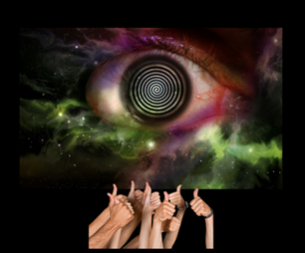What To Do When a Client Falls Asleep in Hypnotherapy
12
Nov
What To Do When a Client Falls Asleep in Hypnotherapy
November 12, 2013
Sometimes when a hypnotherapist induces hypnosis, the client appears to have fallen asleep. This may not actually be sleep as we know it, but rather it may be a signal that this client is what we call a somnambulist. These folks go very deeply, very quickly, into a hypnotic trance or into a dissociative state. Our research in over thirty years of trauma work is that somnambulism is a defense mechanism which the young child has unconsciously used to “retreat from the reality of trauma” and to find a safe haven. This is a natural response which also confirms what we teach, that hypnosis is a natural state of mind. Young children go to that state frequently when they visualize “imaginary friends” or just stare out the window and “disappear.” They may be in a deeply hypnotic trance state. The adult in our office may have been this traumatized child who is well trained to go to sleep when threat or fear arises.
Before completing the session, we would inquire how much sleep they had last night to try to rule out that this response may just be exhaustion. But most often a client who falls asleep in your office (this is different than falling to sleep listening to a recording of the therapist’s voice) is having a response to facing some traumatic events in their life.
In the work that we do at The Wellness Institute, we are learning to recognize what a shock response looks like. A client falling asleep during the induction is a probable indicator that the client is withdrawing from the process, possibly out of deep, unaddressed and therefore unconscious fears.
How Do You Treat this Shock?
Immediately at the point of your client appearing to be asleep, you can vary the volume and tone of your voice in order to rouse the client. If he/she doesn’t respond to that, I would gently wake them up and treat their shock. This would include asking the client to sit up, which involves “changing the shock posture” and often will move the person out of their dissociative response of falling asleep. The therapist can also ask the client to take a drink of water as well as to offer them some heat or cold to place on their belly, neck or chest. The therapist may certainly ask if the client is aware of what their fears may be. All this is done within the trance state, and you can instruct the client, “Now keep your eyes closed and let yourself really feel what’s going on inside your body.”
A qualified hypnotherapist would go back to what the client’s presenting issue is to discover what the fears are. However, many people don’t consciously know what their deepest fears are about and that is why they have chosen hypnotherapy. An example of this is a client who had a huge fear of hospitals, doctors and couldn’t even relax when going to the doctor’s office. He kept falling asleep during the induction. When his shock was treated, and he began to feel safe, the client was finally able to remain awake during the induction. When regressed to the source of his anxiety about doctors and his sleepy response, he regressed back to six months old. It turns out that he was born with a physical disability and required many painful surgeries as a very small baby. He was filled with much anesthesia for the series of operations. Also, during those days, parents were not allowed in the operating room or even the recovery room for fear of infections. The result of this is that there was no comfort available to the disabled baby, our “sleepy” client. The hypnotherapist learned to use shorter inductions and build in resources so that the client could heal the baby within him and release the anesthesia from his body.
An experienced hypnotherapist develops the clinical skills of managing the client’s depth of trance, the level of their somatic energy, and treating the traumatic shock embedded in their nervous system.
{{cta('3b407751-b62e-45e3-bc8f-70747c68aa02')}}









